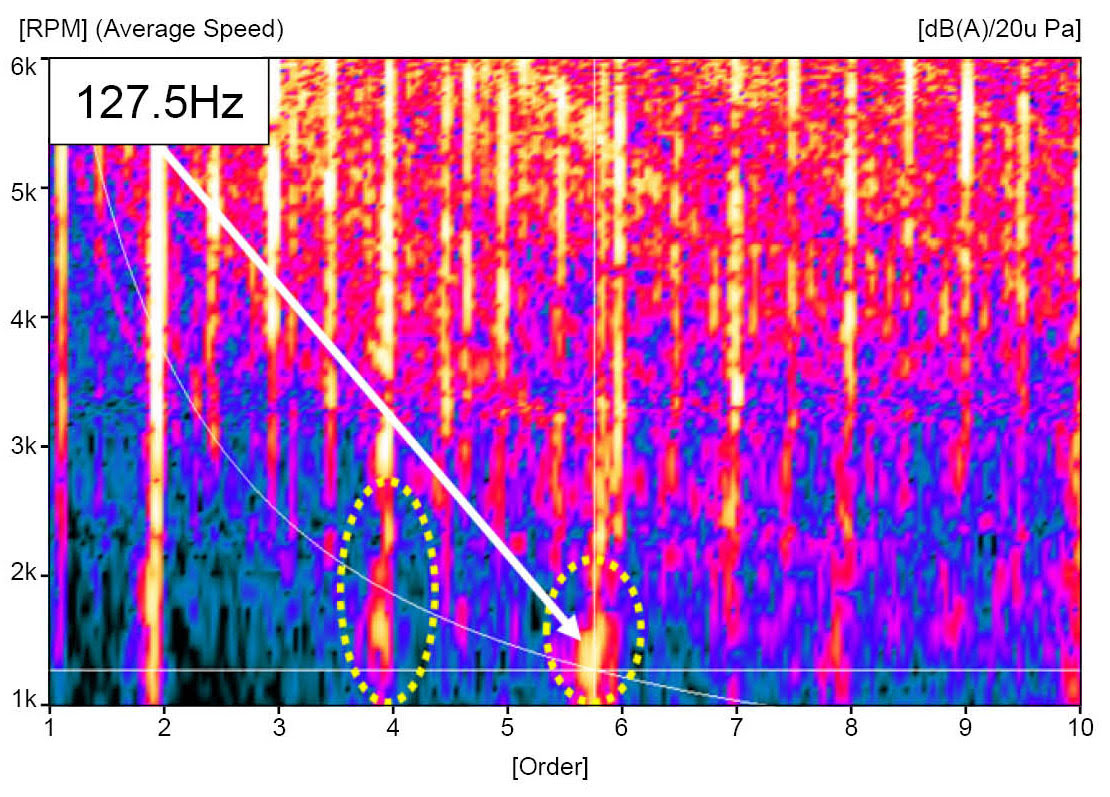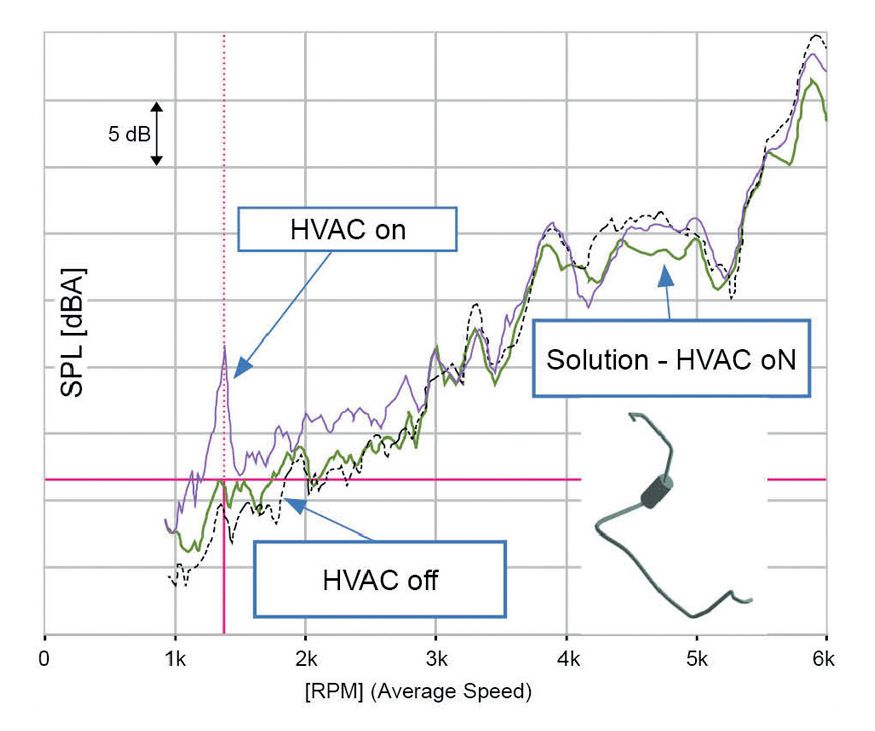Engineers in the automotive industry continue to be under pressure to reduce the time-to-market while designing vehicles with respect to noise, vibration, and harshness (NVH). With thousands of components interacting within a vehicle structure, noise is hard to predict and to design for. Engineers must anticipate problems and have the right tools and expertise to identify and solve NVH problems in the final phase.
 BY: EDMAR BAARS
BY: EDMAR BAARS Co-founder Vibroacustica
Trial-and-error methods unsuccessful
In one case, Vibroacustica was able to assist a customer that had been working for months, with some success, to identify the source of an interior vehicle noise problem, which had begun when the heating, ventilation and air conditioning (HVAC) system was modified. At speeds from 1300 to 1500 RPM, the interior noise increased by around 10 dB.
Engineers were trying to figure out if the source of the noise was the HVAC system itself or if it was the path that was transmitting the sound. The HVAC noise transmission involves several sources and paths and several natural frequencies coupling together. So, it was difficult to identify the main noise source and the main path by traditional trial-and-error methodology.
Source path contribution method
Vibroacustica has been a Brüel & Kjær partner since 2010 and provides engineering services for the whole of Latin America, specializing in noise, vibration, and thermodynamic applications. It also has experience working on compressors used for refrigeration.
The Vibroacustica engineers worked with their customer's engineers and applied advanced methods including source path contribution (SPC) techniques, experimental modal analysis, and operating deflection shapes (ODS) analysis to fully understand the problem.
The SPC method was fundamental in identifying the cause of the noise and indicating a direction to follow. This method meant the engineers could understand how vibrations developed from the HVAC system into effects at the receiver position and enabled them to trace the noise back to the specific root cause.
 The order and its frequency: order 5.8 at a frequency between 120 to 130 Hz, as the compressor has five pistons and the pulley ratio is 1.16
The order and its frequency: order 5.8 at a frequency between 120 to 130 Hz, as the compressor has five pistons and the pulley ratio is 1.16Understanding the cause
Understanding the cause of the problem is essential to achieving a successful solution. Engineers used an energy propagation map to visualize how energy was propagated from the source to the interior of the vehicle in the form of noise. This map helped them to elaborate on their hypotheses and to apply the SPC method.
From the energy propagation map, a hypothesis diagram was built, which presented possible causes that could generate the problem.
Finding the best response
Using these methodologies, the engineering team discovered that the main cause of the problem was the new compressor, which had a high discharge gas pulsation that excited the condenser’s natural frequency, coupled with the front chassis natural frequency.
A number of options existed to change the structural power transmission path: changing the chassis, changing the condenser, and/or changing the radiator/condenser assembly pads. However, the team knew that it is often more complex and less effective to pursue this type of solution because they could risk shifting the problem to another rotation or frequency An alternative type of solution is to reduce the excitation that is, to reduce the pulse that reaches the condenser.
 Ten filter configurations with different volumes were evaluated to meet the 15 dB attenuation criterion around 130 Hz
Ten filter configurations with different volumes were evaluated to meet the 15 dB attenuation criterion around 130 HzConsidering the time available, the engineers decided to introduce a reactive acoustic filter in the high-pressure piping between the compressor and condenser. The volume was defined by numerical simulation, using the acoustic finite element method. The noise reduction was simulated and several filter configurations with different volumes were evaluated to meet the 15 dB attenuation criterion at around 130 Hz.
Validated solution
To confirm the proposed solution, a prototype was built and tested on a vehicle. The internal pressure level results showed a 10 dB reduction at 1350 RPM. So, the proposed solution successfully reduced the internal noise levels to the same levels as when the air-conditioning system was off.
In just 10 days, the engineers were able to clearly identify the main cause of noise inside the vehicle and to develop and validate a solution based on prototype tests, demonstrating the significant advantage of applying relevant methodologies and simulation to these types of problems.
In fact, Vibroacustica continues to apply these solutions in different situations for problem-solving, benchmarking, and to gain a deeper understanding of issues. As Edmar Baars, one of the founders of Vibroacustica explains: “We use the SPC methodology to estimate the operational forces and then use these forces to simulate internal noise and develop noise control solutions by simulation, looking for the internal noise level and spectrum. The SPC method is an invaluable tool that can identify main paths and solutions, evaluate modifications, compare subsystem sensitivity, and estimate the excitations force.”

Abonnez-vous à notre Newsletter et recevez les dernières actualités en acoustique et vibrations

